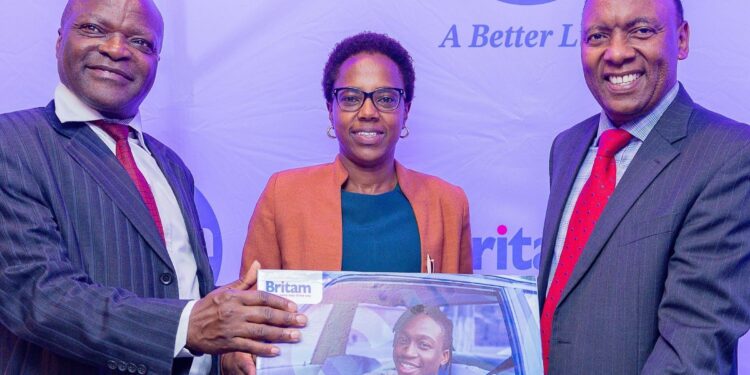Britam Holdings has launched its micro-insurance subsidiary, Britam Microinsurance, branded as Britam Connect, following regulatory approval, marking a bold expansion into Kenya’s underserved insurance market. With a focus on affordability and accessibility, the firm is leveraging technology and strategic partnerships to embed insurance into everyday transactions, targeting gig workers, small-scale farmers, and low-income earners.
Rethinking Insurance for Everyday Transactions
“Most people don’t wake up thinking about insurance,” said Evah Kimani, acting CEO of Britam Micro-insurance. “They think about buying mobile data, fueling their motorbikes, or sending money. That’s where we are embedding our products, within daily financial transactions,” she said.
Kimani said taxi drivers using the ride-hailing platform Little can now access personal accident coverage for as little as Sh5 per trip, while Boda boda riders, Kenya’s ubiquitous motorcycle taxi operators can also bundle accident insurance with mobile data purchases. Britam Connect’s early foray into embedded insurance has already covered over 300,000 gig workers, underscoring the potential of this model.
Britam is not new to microinsurance. Since launching Kinga ya Mkulima in 2007, the company has grown to insure more than four million Kenyans, capturing over 40% of the country’s micro-insurance market. The establishment of Britam Connect formalizes its dominance, with ambitions to scale further.
Closing the Insurance Gap
Historically, insurance in Kenya has struggled with perceptions of complexity, high costs, and irrelevance to the informal sector, which accounts for over 80% of the workforce. These challenges have kept adoption rates low, particularly among gig economy workers and smallholder farmers, two segments that Britam Connect is aggressively targeting.
For farmers, insurance is now becoming a viable safety net rather than a luxury. Through a partnership with Majani Insurance Brokers—a Kenya Tea Development Agency (KTDA) subsidiary, Britam Connect offers health coverage for as little as Sh85 per month. Farmers can access both inpatient and outpatient care, easing the financial burden of medical expenses.
“We needed to rethink insurance beyond the traditional models,” said Kalai Musee, director of supervision at Kenya’s Insurance Regulatory Authority (IRA). “Britam Connect’s approach aligns with our vision of making insurance more relevant and inclusive,” Musee said.
Scaling Beyond Kenya
Britam Connect is setting its sights beyond Kenya, with a target of reaching 25 million people across Africa within five years. Partnerships with InsureTech firms, Savings and Credit Cooperative Organizations (SACCOs), and development organizations will play a critical role in expanding its footprint.
A recent collaboration with Oxfam is already testing the model’s resilience. Through this partnership, Britam Connect is subsidizing flood insurance premiums for vulnerable communities in Kenya’s Tana River County, a region prone to climate-related disasters.
“For us, success isn’t just about policies sold,” said Kimani. “It’s about ensuring that when a gig worker gets into an accident or a farmer loses crops to floods, they have a financial cushion to rebuild their lives,” she added.
By embedding coverage into everyday transactions, Britam Connect is betting that insurance, long viewed as a privilege for the few, can become a mainstream financial tool for millions. Whether the model can achieve scale across Africa remains to be seen, but for now, Britam is making a decisive play to redefine micro-insurance in Kenya.












